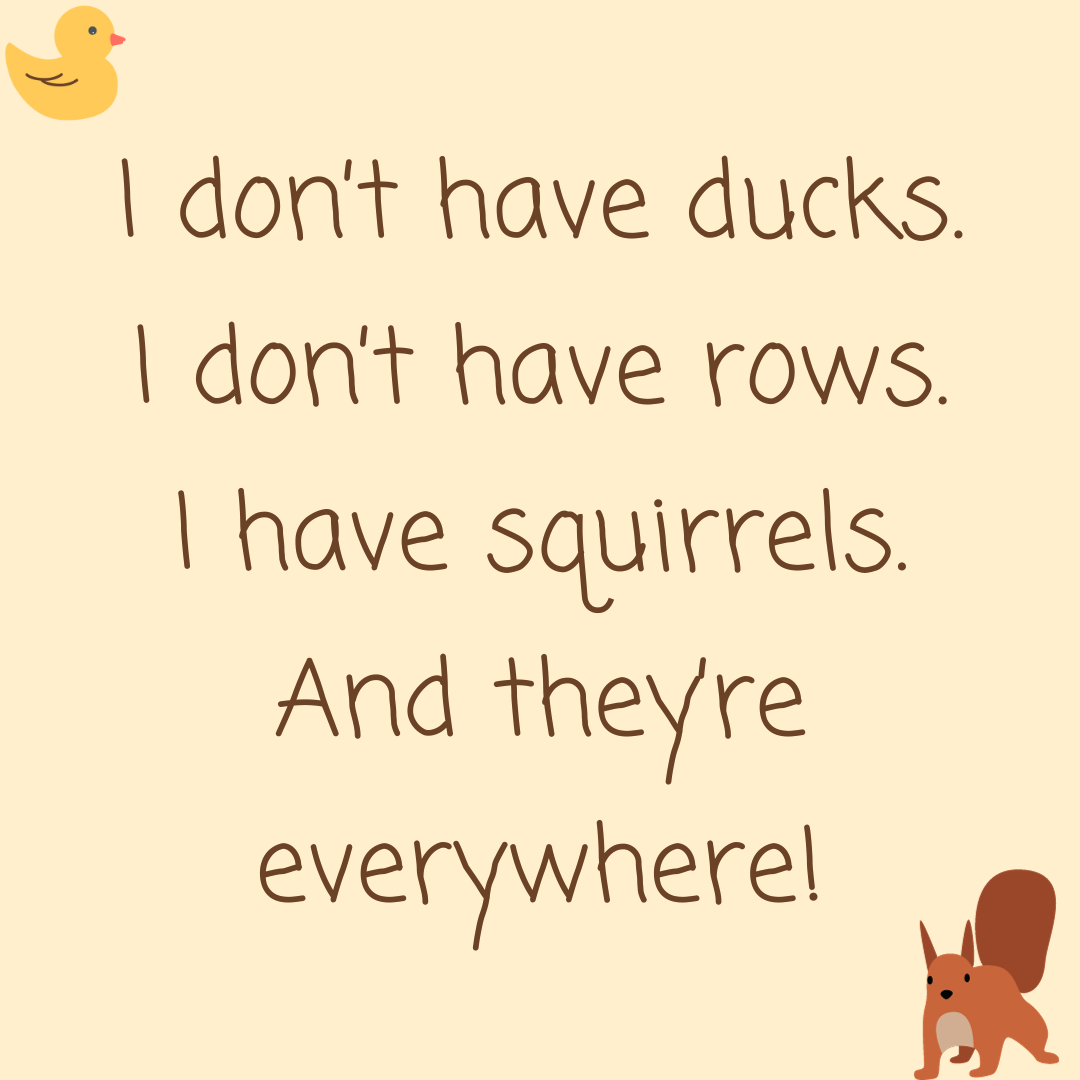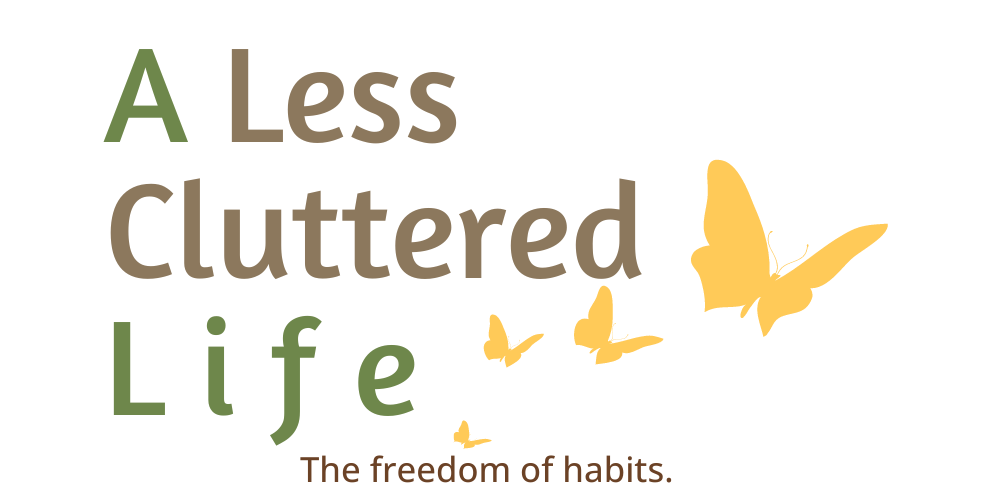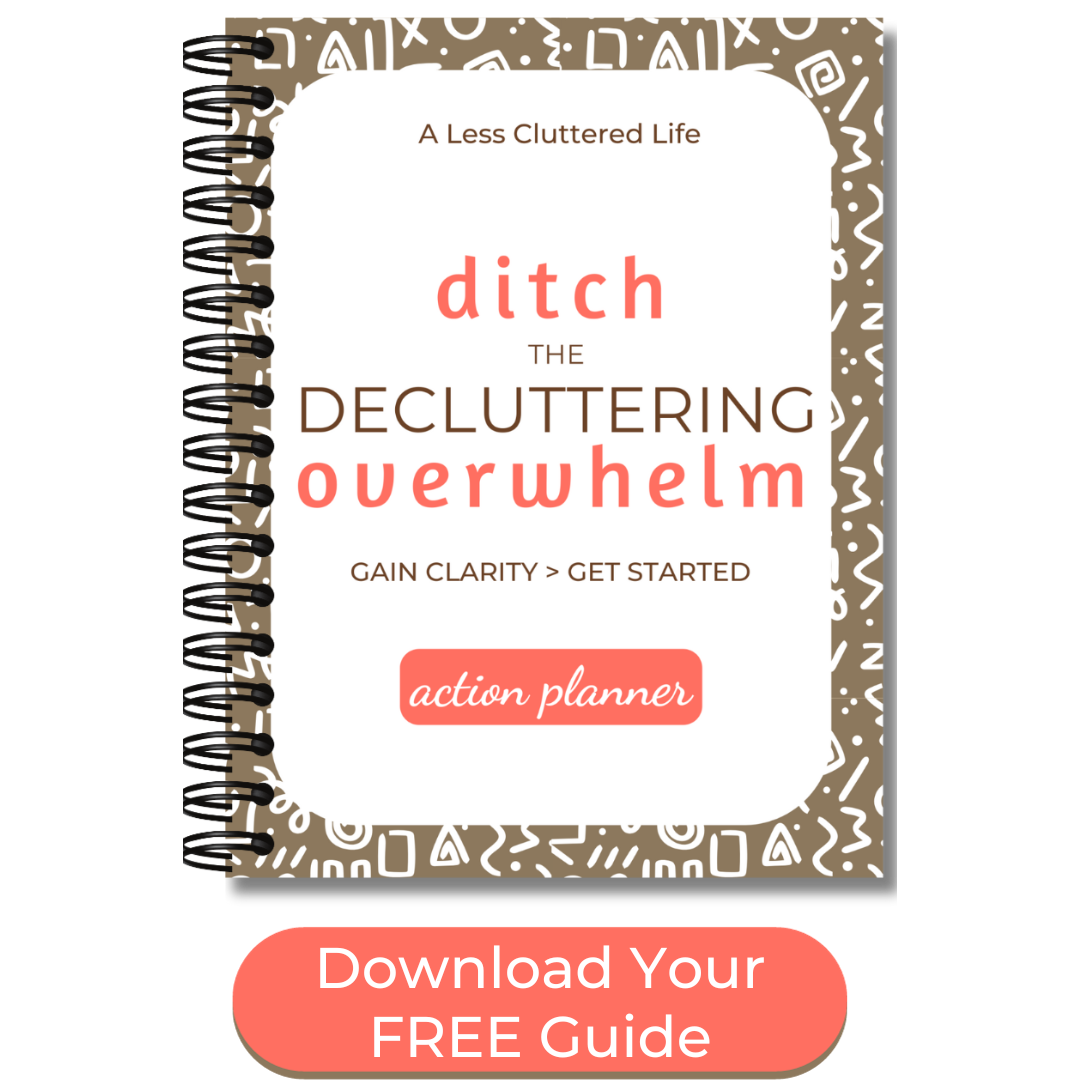|
by Susan McCarthy Setting your goal for decluttering your home can feel like an uninspiring task. Instead, try a variety of motivating techniques - from identifying your why, to a decluttering meditation, to WOOP. When I started decluttering, all I wanted to do was to get rid of the excess stuff that was crowding around me. The process was slow and laborious. Not so much because of the amount of stuff I was sorting through but because I didn’t know what I could let go of. Each item, even each sheet of paper, received an exhausting level of thought. Occasionally, I was fortunate and made a ‘group’ decision. For example, by deciding that I didn’t need to keep the bills or bank statements from a certain year, I could get rid of all the preceding years as well. But there were so many other items that I just didn’t know how to get rid of. Would I lose weight and fit into those pencil skirts? Would books connected to a casual interest become more important to me in the future? Would I find the time to get back into watercolor painting? Questions, questions, and more questions. Unfortunately, too often my response was to do nothing. I pretended that this was a sensible solution because it gave me time to discover that I would indeed use those things! If you’ve done the same thing in the past, then you may have realized that you don’t go back and do those things that you thought you might. If you lose weight, you want to buy new clothing as a reward. Your interests follow what captures your attention now so it’s unlikely you’re going to read books or use the supplies from an interest that passed years ago. How to declutter your home when you’re overwhelmedWouldn’t it be great if you could peer into your future and see what you’d need and what you could get rid of? Well, you don’t need a crystal ball for that. Instead, you can clarify the way you think about your stuff by envisioning your clutter-free home. One of the things I did wrong when I started decluttering was focusing on the stuff. I didn’t know any better. And it made sense, if I was sorting through the stuff, wasn’t that what I should be paying attention to? Turns out, no, it wasn’t. Focusing on stuff focuses on ‘just in case’ scenariosTrying to declutter by focusing on the stuff is limiting. You’re pushing yourself to answer the question, “Do I need this?” If you can’t answer that question, it’s too easy to fall into the thought that you should hold onto the items “just in case” you need them someday. But what does “just in case” really mean? Nothing. It’s a fear reaction. When you try to imagine the scenario that would require the item, it’s probably a bit of a stretch. It’s difficult to get worked up over, say, not having the blue serving bowl that you hadn’t used for years. Focusing on decluttering ignores the most important part of staying organizedLet’s say that you’re determined to organize your desk once and for all. You devote several hours to sorting through papers, grouping your office supplies on a shelf, and tackling a bunch of small tasks to bring order to your home office. You’re pleased with the results of your hard work. For a week. Then you notice the paper is piling up again. “What was the purpose of organizing all that stuff,” you grumble. Unfortunately, while decluttering and organizing gets all the attention, the most important part of staying organized is maintaining order. I know, the boring stuff. On the bright side, maintaining order takes much less time than decluttering. It’s easier to file a couple pieces of paper, hang and fold today’s laundry, and wash a few dishes than to let these tasks compound over weeks. When you focus on decluttering the stuff, you ignore that these things are here because you live in your home and use this stuff. Envisioning living in your home shows you why you are decluttering and what you need to support those activities. Discover your ideal spaceI devoted so much time and energy to figuring out what to do with my stuff that I forgot I was doing this work for a reason. Instead of focusing on the stuff, think about how you will use a space and how you’ll feel when you are there. For example, are you really decluttering the dining table for the sake of having an empty space? Or are you imagining how you’ll use that space when it’s not covered in mail, gift wrap supplies, and laundry? Concentrating on how you’ll use the space that connects you to your why – hosting dinners, having a flat space to work on a project, and feeling more peaceful because the table isn’t covered in a giant to-do list of tasks. Even if you are just starting the process of decluttering, thinking about why you are decluttering motivates your actions, but it also answers the questions about whether you want to keep or get rid of things. When you come across an object that you aren’t certain what you want to do with, you can connect it to your purpose for the space. Do you see yourself using this item to support your goal for this space? Another benefit to decluttering and organizing a space is that you can keep order with minimal effort. You regain time that you once used to rearrange or put a few things away. You aren’t taking time online looking for tips or tools that will help you tidy the space. Connecting to your reason for decluttering and organizing your home keeps you focused on what you need and what you need to do. Using mindfulness when declutteringBeing mindful when decluttering encourages you to focus on the task you are working on. When you have a goal for decluttering a space, mindfulness reminds you to stay with this space as opposed to imagining all the other organizing tasks you have before you. Because you focus on the things you are sorting through, and nothing else, you can better decide what to do with the items you are handling. Instead of trying to answer standard questions related to decluttering, like “Have you used this in the past year or six months?” you can connect to your purpose for decluttering. You don’t fall into the “just in case” excuse to hold onto things, thinking that maybe you’ll get back into photography or skiing. Instead, you check in with your goals and vision for your future self and you know what's important. Decluttering MeditationTo connect your reasons for decluttering and how you want to use a space, use this mind decluttering meditation. Move to a space where you won’t be distracted for five or ten minutes. Read through the directions before you begin. Don’t worry about doing this perfectly. If you don’t see clear images, notice what you feel in your body. Or pay attention to words you “hear” in your mind. If you would prefer, you could write out what you see or sense. This isn’t about you directing your vision, so push yourself to do freewriting – write quickly without pausing or editing. You are connecting to your feelings, not doing a creative writing assignment. Or you could say aloud what you are sensing during this meditation. Speak quickly, as if you were describing a scene to someone. And, of course, you can sit with your eyes closed and observe what you see in your mind. In this decluttering mediation, you will picture yourself two or three years in the future. Imagine that you’ve eliminated your clutter. You no longer spend much time shopping in stores or browsing online. You devote much less time during the week cleaning your home. You pare down your wardrobe to essentials that you love and wear all the time. Your home is a peaceful space. It is functional and practical – you can do the things that you want to do. How do you spend your days? Instead of trying to envision your days and weeks, imagine that you are sitting at home or in a coffee shop with a friend or relative whom you haven’t seen much of during the past couple of years. Set this scene by layering sensory details. What do you smell? Is the chair you’re sitting in hard or soft and cushioned? What are you wearing? Are you warm or cool? These details will help anchor you in your envisioned future. Now, while catching up with your friend or relative, you talk about the activities that fill your days. Pay attention to what you are saying. Have you changed jobs? Moved? Taken up a new hobby or have finally found the time for one that you never had time for? Do you volunteer for an organization you’ve long wanted to support? Do you travel more often? While you imagine this conversation, continue to anchor it with those sensory details – the feel of the mug in your hand, the steam caressing your face, the music playing softly in the background. Why bother with these sensory details when you could just make up a list of ways your life could be different? Because, when you imagine such a detailed scene, you’re telling your brain that you are there. Instead of thinking, “Well, my life could be different in this way or that way,” it’s more like you are tapping into a memory. You make your dream for the future a bit more solid, and you create an emotional hook that may be stronger than a goal written on paper. You can spend five or ten minutes envisioning your future … or longer if you enjoy this scene. When you are ready, you can open your eyes. (Don’t worry if you don’t see images. You can also connect to this scene through smell, touch, or sound.) If you want to boost your visualization, allow yourself to feel the emotions you experience in this future scene. And connect to how you feel now, observing your future self. How to declutter mindfullyAfter experiencing this scene from your future, consider the actions that will get you there. In fact, you can consider any action you take today as a way of helping your future self. When you’re debating whether to keep something, you can call up your image of future, clutter-free you and consider if you will want or need the object in your hand. You have envisioned your reason for minimizing your belongings and discovered what you will do with the time and space you create. Now researchers are discovering that visualization is such a powerful tool that our mind may view the goal as completed! The tension that’s a necessary component in motivating us to act is reduced by our imagery. Mindfully address potential obstaclesThe WOOP method – wish, outcome, obstacle, and plan – encourages us to also consider the obstacles that might get in our way (ah, reality, we can’t escape you). So, instead of simply deciding to declutter your dining table Saturday morning (or for ten minutes a day, each evening), think of the things that could get in your way.
Recognizing these obstacles helps you to better plan the actions you need to take. You stay mindful instead of scattering your thoughts and actions in reaction to obstacles as they arise. This doesn’t mean that you have to plan for every possible stumbling block! Instead, expecting the problems helps you be more proactive as you organize your home. Declutter using visualization and mindfulnessNowadays, any decluttering tasks I do are much less scattered than they were years ago when I first started sorting through my stuff. I consider why I'm taking on a task and how it will help me in the future. If visualization seems a bit too woo-woo for you, remember that it is goalsetting - with pictures. Visualization can help you discover what you want from your home. Try the time-traveling meditation described above to connect to your goals and wishes for both your home and your life. Describe why you are decluttering. Is your goal just a neater space? What will you do in that space? How will you feel? Recognize potential obstacles that can come up and hamper your way to your goal. How can you create a proactive plan that responds to roadblocks before you come to them? Think of punching your destination into GPS and noticing traffic and detours ahead on the route. Is your response, “Oh, well” or do you look at alternate routes now instead of getting angry or feeling overwhelmed later when you run into those obstacles? By combining goalsetting, naming your reason for decluttering, visualizing your organized self, and decluttering mindfully, you can stay focused – and help your motivation – throughout the decluttering process. More Resources to Help You Focus on Your Decluttering Goals
0 Comments
Your comment will be posted after it is approved.
Leave a Reply. |
Categories
All
Hi, I'm SusanI'm a former teacher who became a professional organizer (and not because I'm a natural-born neatnik). I live with my husband and fluffy cat on a river in Massachusetts. I crochet, make handmade cards, and love reading young adult novels. Learn more about my decluttering journey here. |
|
Copyright 2024 Susan McCarthy - Susan@ALessClutteredLife.com -
Privacy Policies |
Proudly powered by Weebly

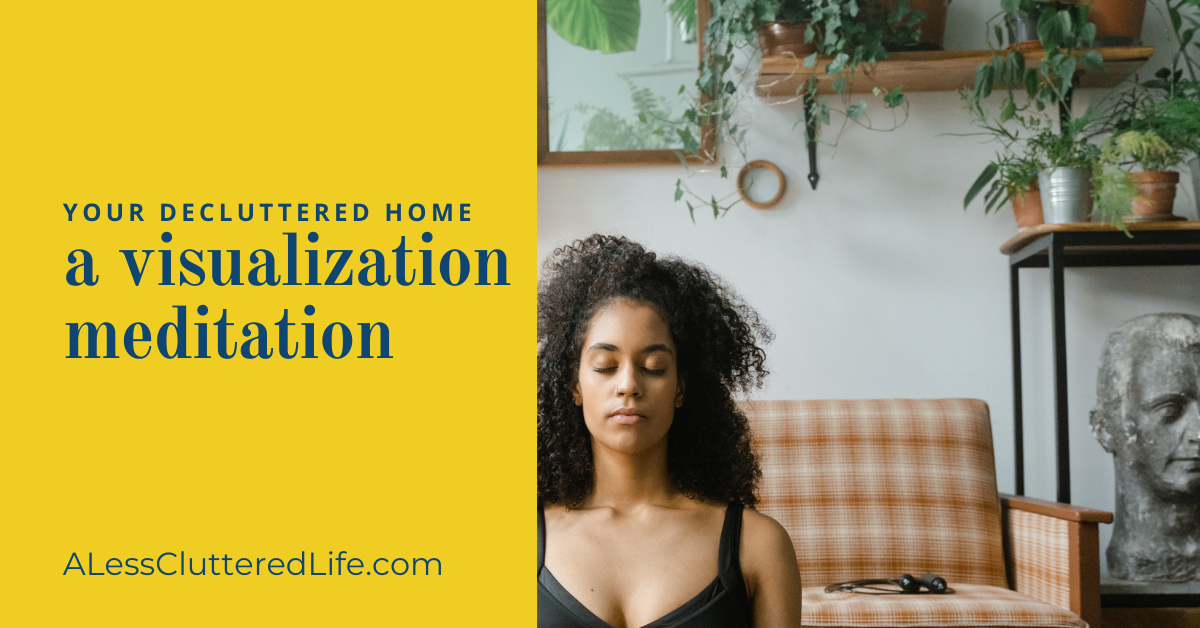
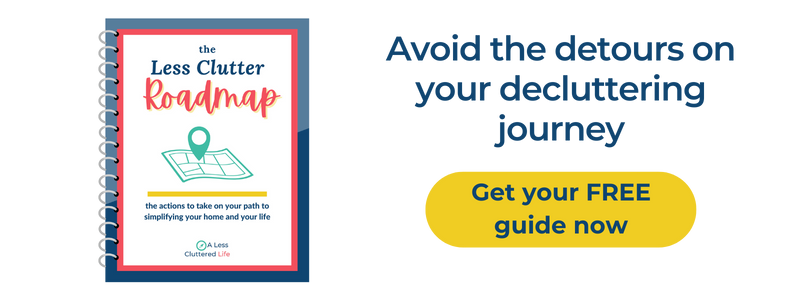
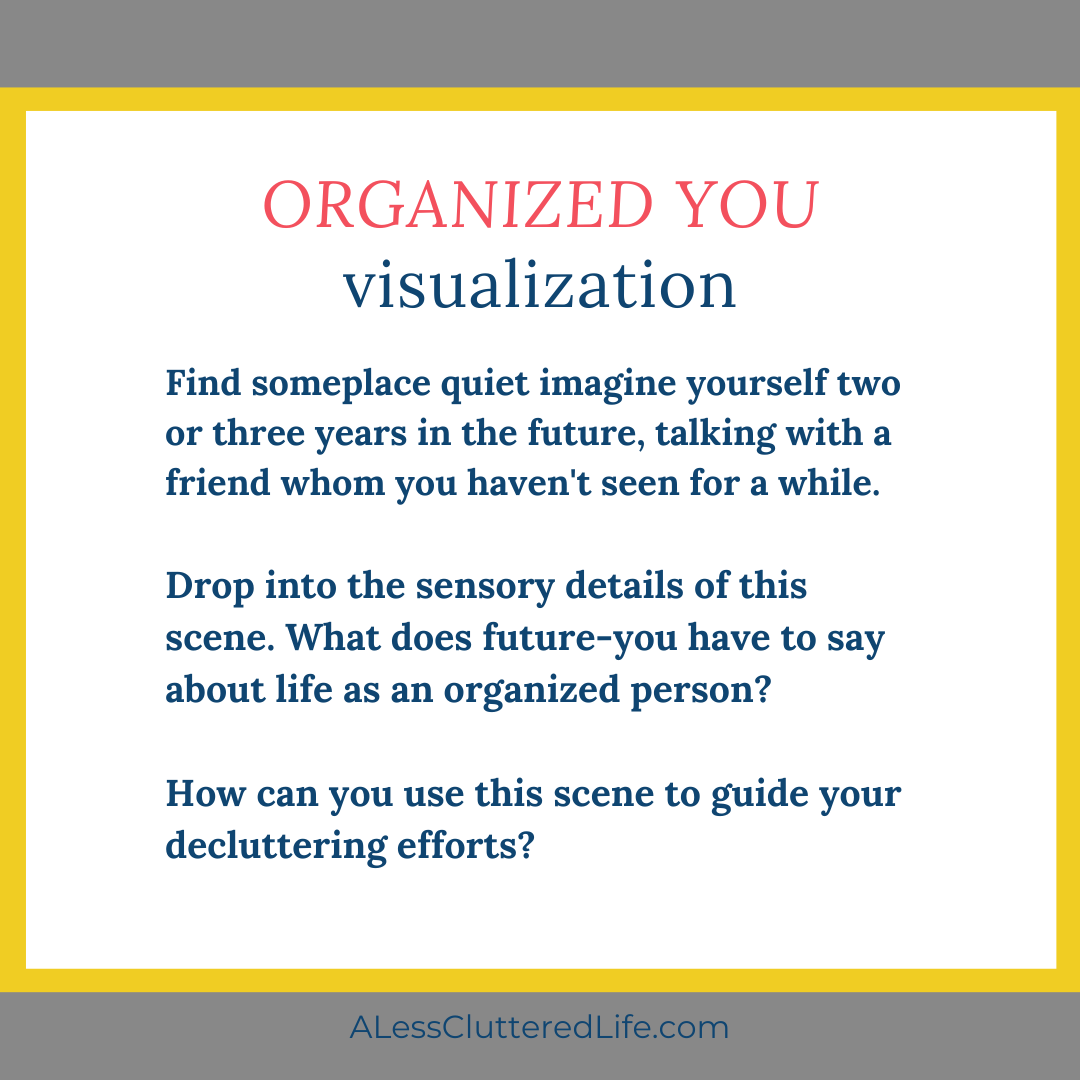
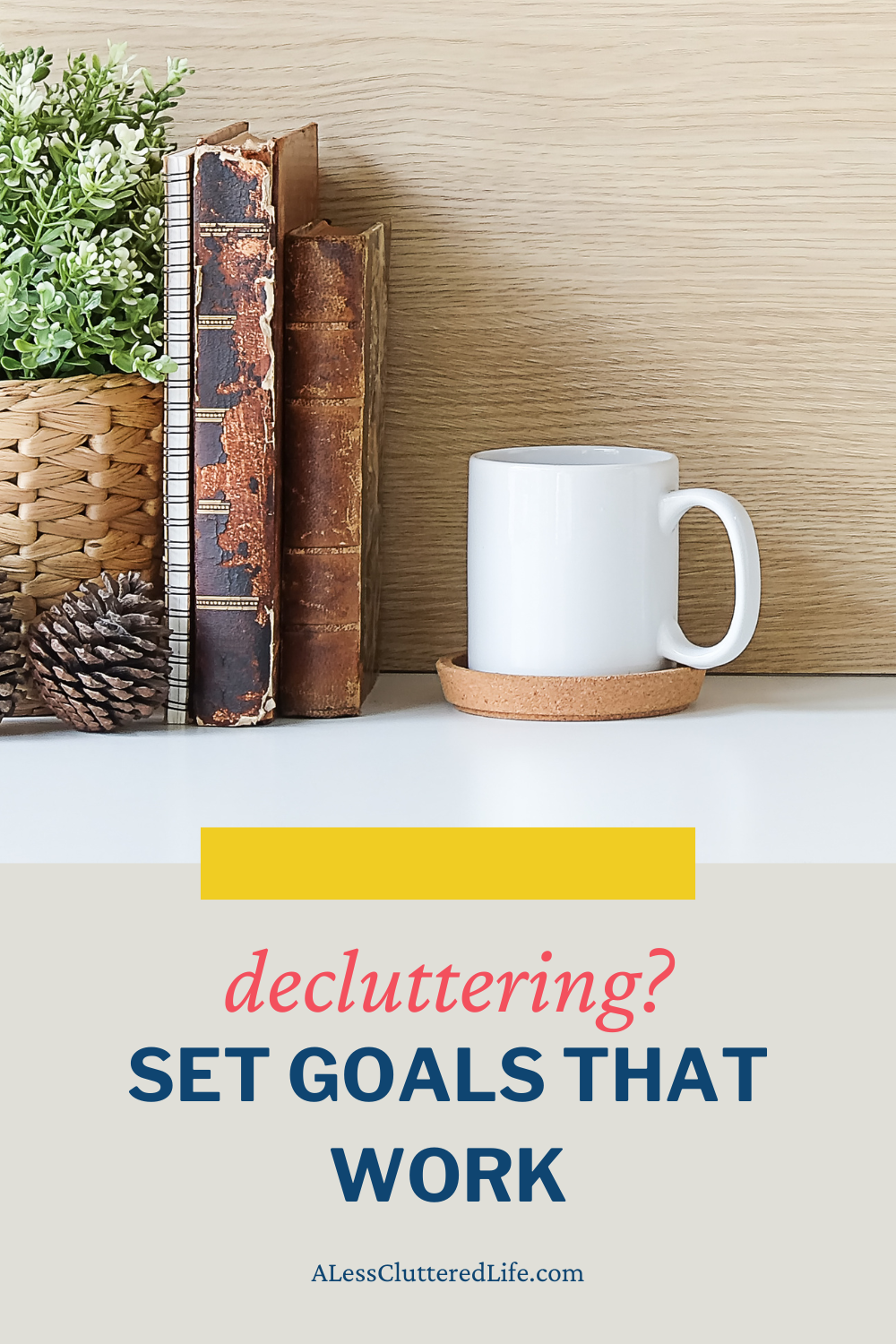
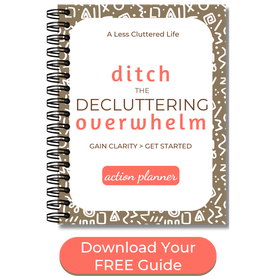

 RSS Feed
RSS Feed
